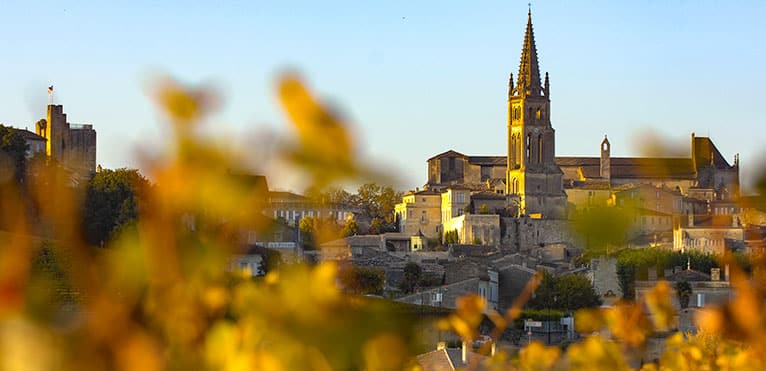
Contents
From the Latin “in the middle of the water”, the Médoc is a region bordered by the Atlantic Ocean to the west and the Gironde to the east. This region is home to the “Vins du Médoc”, a group of 8 distinct appellations: Médoc, Haut-Médoc, Pauillac, Margaux, Saint-Estèphe, Moulie en Médoc and Listrac Médoc.
The Médoc appellation, which belongs to the “Vins du Médoc” wine-growing sub-region, produces exclusively red wines and benefits from two labels: Appellation d’Origine Contrôlée and Appellation d’Origine Protégée.
The Médoc vineyard has a thousand-year history influenced by Henri IV
The vines here have been cultivated since ancient times. However, it’s only since the 17th century that vine cultivation has been more widely developed. One of the main reasons for this was Henri IV’s directive to drain the marshes to make the area more suitable for viticulture. The Médoc wine-growing region has two classifications: the one established by Napoleon in 1855, which classifies the Grands Crus of Bordeaux, and the one established in 1932, which classifies the Crus Bourgeois.
An exceptional geographical location for the Médoc vineyards
Located in the “Bas-Médoc” sub-region of the Médoc, to the north of the peninsula, the appellation enjoys a temperate oceanic climate. It extends over 5,500 hectares, to the north of the Saint-Estèphe appellation, and covers numerous villages. As the vineyards are spread over a large area, the climate differs from one zone to another. In fact, the western part is directly exposed to the marine climate, while to the east, the Landes forest protects the vines.
Vineyard soils are fairly flat, and the region has little relief. They are made up of gravel, a mixture of gravel, pebbles and sand.
Finally, the vines of this appellation are planted on alluvium, i.e. sediment transported by water, with the different areas of the appellation separated by streams, more commonly known as “jalles”.
A powerful, structured palate characterizes Médoc wines
With around 38 million bottles of red wine produced annually, the vineyard’s output is substantial. The grape variety most commonly used to produce wines of this appellation is Cabernet-Sauvignon. In fact, it is highly resistant to rot, a vine disease, so the grapes can ripen longer and be harvested later. Other grape varieties such as Merlot, Cabernet-Franc and Petit Verdot are also used in production.
To the eye, Médoc appellation wines are garnet-red in color. On the nose, there’s a lovely range of aromas: red and black fruits, notes of bell pepper, cocoa and spices. The palate is powerful and well-structured, with remarkable, flavorful tannins. Notes of undergrowth and licorice can be detected, particularly in the wine’s youth. With age, the wine tends to develop more animal and roasted notes.
To fully appreciate its flavour, this wine should be drunk between its 5th to its 10th year.
Médoc wines are ideal with red meats or cheese.
Médoc wines are well-structured, robust and full-bodied, and go well with red meats, small game and soft cheeses. What’s more, they go perfectly with hot foie gras with apples, for example. Last but not least, these wines are at their best when drunk between 16 and 17 degrees Celsius.
Vintages of the millennium, a vintage of the century, exceptional vintages and a great vintage for AOC Médoc
Vintages, which indicate the year in which the grapes were harvested, are used to classify different wines from the same geographical area according to their exceptional character. The Médoc appellation produced wines considered millennium vintages in 1982, 1990 and 2005. The vintage of the century was 2009, and the vineyard produced exceptional vintages in 1989 and 2000. Finally, the appellation stands out in 2010 with the production of a great vintage.
Prestigious Médoc châteaux, including a Grand Cru Classé
Château La Tour de By
The origins of this château date back to 1599, when it was purchased by the lord of the fiefdom of By. In 1965, its history took another turn when it was acquired by Marc Pagès, an agricultural engineer, whose ambition was to combine the quality of his wines with respect for tradition; an ambition that his heirs continue to pursue to this day. For example, they have implemented a reduction in the use of chemicals in the vineyards.
This Médoc vineyard covers 94 hectares with an average vine age of 45 years.
Château La Tour Carnet
This Château in the Haut-Médoc region is owned by the Magrez family. Its history is closely linked to the history of France, as it bears the name of the man who resisted French royalty, but also because it was at the heart of the Médoc vineyard revolution.
The history of this estate is also marked by its inclusion in the 1855 Classification des Grands Crus Classés, a classification requested by Napoleon which ranks the great Bordeaux growths. This classification recognizes the quality of this wine and its exceptional character.
What’s more, the estate covers 139 hectares, making it the largest in the Médoc, and with its clay-limestone soil, La Tour Carnet wines are produced mainly from Merlot.